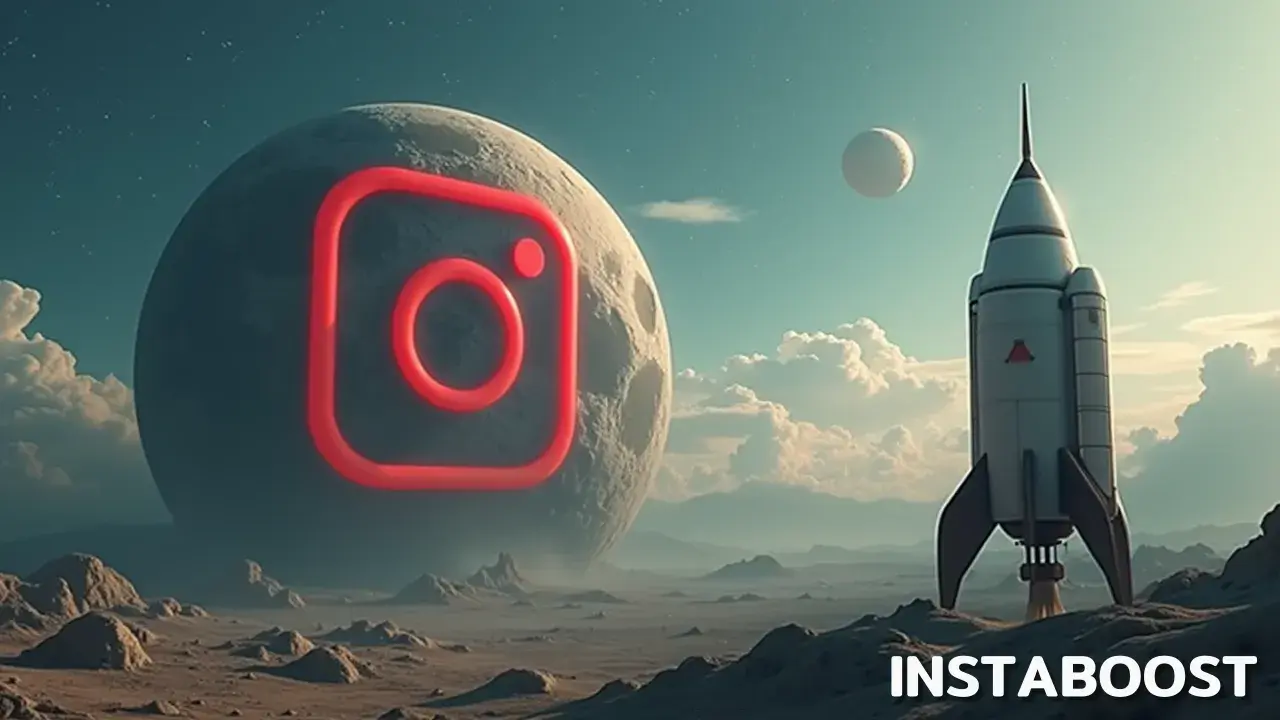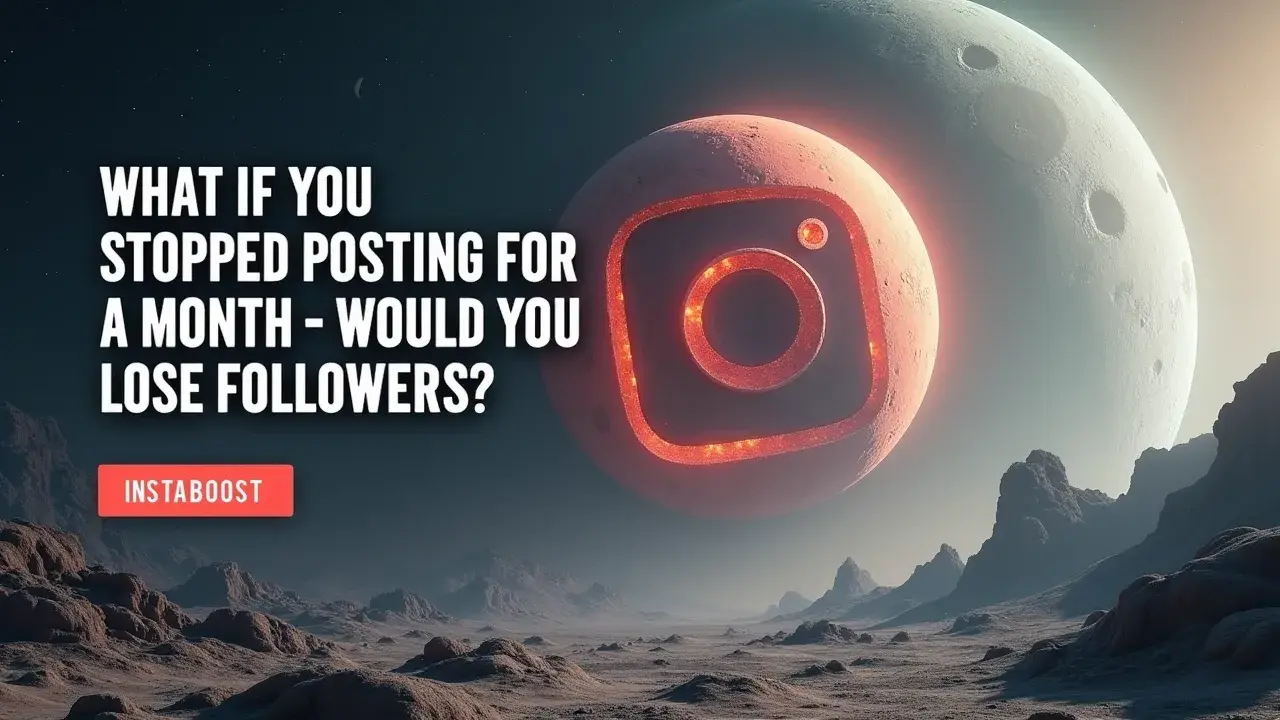What Happens If You Pause Instagram Posts for a Month?
Taking a month off typically slows momentum rather than harming overall standing. Expect fewer new interactions during the break, with loyal viewers still engaging when content appears. After returning, a brief dip in first-hour activity is common, and two or three steady posts usually restore prior levels. Focusing on fit, timing, and genuine engagement signals helps maintain relevance beyond short-term vanity spikes.
The Perceived Risk of Going Silent Online
Stepping away from social media can feel unsettling, especially if you’ve put a lot of time into connecting with people or growing an audience. It’s natural to wonder what would happen if you stopped posting for a while – would everyone forget about you, or would your numbers start to drop? These worries are common, since platforms like Instagram and TikTok really do reward people for being active. There’s this feeling that if you’re not posting, you’re falling behind, and it’s easy to slip into a routine where staying visible becomes more important than taking a breather.
But if you look closer, the reality is a bit more complicated. Some people find that their main followers stick around, even if they take a few weeks off. It often depends on things like whether you’ve built real connections, what you usually share, and which platform you’re on. Some folks who run small businesses, for example, notice that their regulars are still there after a short break, while others might see a dip in reach but not much else.
And, of course, there’s always a new set of tools for growing your Instagram reach popping up, which can add to the pressure to stay engaged. There isn’t a single answer about what you risk by stepping away, so it’s helpful to pay attention to what actually changes when you pause, rather than relying on the anxious feeling that something important will disappear if you’re quiet for too long.

Lessons From My Own Month-Long Social Media Break
Most of what I’ve actually learned hasn’t come from reading tips or following advice, but from getting things wrong. When I decided to stop posting for a month, I was convinced it would go badly. I kept imagining my follower count dropping, my posts getting ignored when I came back, and feeling cut off from everything happening online. What happened wasn’t nearly as clear-cut. I did lose a handful of followers, but not as many as I expected, and most of them never really interacted with me anyway.
What surprised me was how many people reached out quietly – sending a message to ask if things were alright, or just to say they noticed I was gone. It made me realize follower numbers don’t really capture what’s actually happening between people. I felt like I had more to say when I returned, because I’d had time to step away and live a little. All those rules about needing to post all the time started to feel less convincing. I get why people look up ways to boost IG followers safely, especially when it feels like numbers matter so much, but social media guides always stress the importance of staying present, and I realized that if people care, taking some time off doesn’t really change that. It sort of showed me who was really paying attention, and who would still be there when I wanted to share again.
Building Momentum Before You Step Away
Momentum on social media isn’t really a mystery – it’s something you shape on purpose, bit by bit. If taking a month away sounds risky, the most practical thing is to plan for it well before you ever need the break. The people who step away and still keep their presence going aren’t lucky; they’ve taken time to set things up so they don’t lose touch.
That might look like having a few regular habits, like posting updates at certain times, or sharing things their followers expect, instead of chasing after whatever’s going viral that week. Scheduling tools help, too – most platforms let you line things up so posts go out while you’re offline, and honestly, sometimes it seems like more people are starting to buy Instagram likes online just to keep things steady when they’re not around. It’s not about always being there, but about making your presence steady enough that people know what to expect.
When you invest in real conversations in the comments or check in with people who keep showing up, it builds a kind of trust. It’s less about numbers and more about whether anyone would notice if you disappeared for a while, whether the page means something to them at all. When you have that kind of base, it becomes easier to step back when you need to, and you might even realize you come back with a better sense of what matters.
Rethinking Metrics: The Illusion of Losing Ground
For a long time, I figured if I kept track of more data, things would make more sense. When I got anxious about stepping away from social media, I’d notice every little dip in followers or likes, thinking those details really showed what was going on. But after not posting for a month, I realized how easily those numbers can throw you off, especially if you’re watching them all the time.
At first, the idea of losing followers bothered me a lot. But when I pulled back, I saw how much time I was spending on these small changes that didn’t actually matter. Most people aren’t focused on what you’re doing online. If they care about what you share, they stick around more than you’d expect. Engagement might drop for a bit, but it’s rarely as serious as it feels in the moment.
Sometimes, taking a break actually helps – coming back can feel a little lighter, and people remember what drew them to you before. The way algorithms work is kind of a mystery, and sometimes you wonder if there’s some secret to increase views on Instagram videos, but a month off doesn’t erase the connections you’ve made. It’s easy to blame drops and spikes on your absence, when a lot of it probably has more to do with whatever else is going on – seasons, trends, how you’re showing up, not just how often. When you’re always posting, every small change seems huge, but with some distance, it’s clear these numbers don’t tell the whole story.
Redefining Success: What Actually Matters When You Return
Taking a month off from posting doesn’t really fit into any neat explanation, but that’s exactly what stood out to me. Coming back after that break felt a little flat at first, though there was something comfortable about it too. I thought I’d return to find my follower count way down, or barely any likes, but it was quieter than that: some numbers had shifted, but the people who actually care about what I share were still there.
It became obvious pretty quickly that these metrics don’t really shape the way I connect with people, or how much energy I have for making something new. Time away made it easier to see who I was really talking to, and which interactions were more about scrolling and algorithms than actual conversations. I remembered once reading about a smart way to grow Instagram visibility, but after the break, that seemed less important than the satisfaction of genuine exchanges.
When I started up again, it was hard not to feel pressure to pick up where I left off, but I had to stop and consider whether I wanted to go back to the same pace – or if I even needed to. Social media doesn’t have to mean posting all the time; it can be more about showing up in a way that works for you, even if that’s less frequent. Taking a break also helped me notice what I actually like sharing, and the kinds of posts that lead to real replies instead of quick reactions. It was a good reminder that my worth isn’t tied to how often I update, but to the thought I put in when I do. So after a month away, the thing that stuck with me was how much freedom there is in deciding for myself what matters when I log back on.
Shifting Priorities: Why Your Value Isn’t Tied to Constant Activity
Stepping away from posting for a month, especially if you’re used to sharing updates all the time, makes you look at social media a little differently. It’s easy to get into the habit of thinking your presence online – how often you post, whether people notice when you’re gone – says something about your worth. When you’re so used to being present, it feels risky to step back.
But after some real time off, you start to see that most of those worries don’t play out the way you expect. The algorithm might not put your posts in front of as many people, but the ones who care usually still want to hear from you, even if you haven’t been active lately. There’s less pressure to jump on every trend or to keep chasing likes and comments. I found myself thinking more carefully about what I wanted to share, and not just posting because it felt required. Someone once mentioned to me how tempting it is to look for a comment boost for Instagram posts during those quiet stretches, as if that could fill the gap.
It becomes clear pretty quickly that your value online isn’t about how often you show up. You might lose a handful of casual interactions, but you end up with a stronger sense of what you actually want to say. The fear of losing followers is real enough, but it’s not the main thing. The bigger question is whether you’re making space for the things that actually matter to you, both online and off. It changes the way you think about social media – and how you think about what it means to do something meaningful at all. When posting isn’t a constant background noise, you notice different things.















